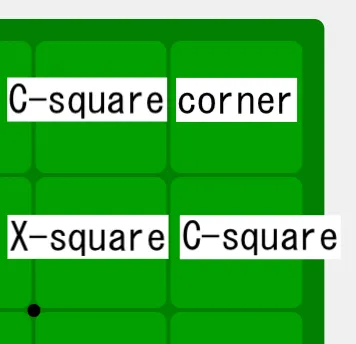While Reversi has simple rules, it is a game with many strategies and decision-making criteria. As the developer of a Reversi AI, I have analyzed data from thousands of games during development. Here, I will explain the common points of strong play that have emerged from this analysis.
Data from Thousands of Matches Reveals 'High-Value Moves'
Roughly quantified, the following trends were observed:
- ① Corner Value: Around 67 Points
- ② Edge Value: Around 6 Points
- ③ Squares Adjacent to Corners: Around -40 Points
- ④ Increasing/Decreasing Next Valid Moves by 1: Up to 7.5 Points
While the numbers may seem cold, they confirm the well-known fact that corners are indeed powerful.
Conversely, squares adjacent to corners (especially X-square moves) are considered quite disadvantageous. Playing carelessly in these squares often leads to giving the opponent access to the corners, which higher-level players tend to avoid.
Edges are often considered 'strong,' but when viewed in isolation, they do not hold that much value. If you cannot secure the corners, playing on the edges may even risk increasing your opponent's stable discs.
And surprisingly important is not 'how many pieces you can flip right now' but 'the number of valid moves available next.' I personally found that prioritizing this over piece count in the early to mid-game improved my win rate.
Phase-by-Phase Strategy
Early Game: Don't Increase Pieces
In the early game, it's tempting to increase your pieces, but what directly leads to victory is increasing your valid moves later while limiting your opponent's options.
An effective tactic for this is 'central insertion'. Specifically, it involves slipping your piece into your opponent's cluster of pieces to create a shape that allows only you to extend horizontally next.
In addition, there are some established opening strategies in the early game. For example, Rabbit Opening and Tiger Opening can help you get closer to becoming an advanced Othello player.
Midgame: The Battle for Corners
As you enter the midgame, how you handle the corners can change the flow of the game.
In the battle for corners, handling moves known as 'X-square' and 'C-square' is crucial. Here is a brief explanation.

What is an X-square move?
An X-square move is a placement diagonally adjacent to a corner. Since it carries a high risk of allowing your opponent to take the corner, it should generally be avoided.
What is a C-square move?
A C-square move is a placement adjacent to a corner along the edge. Similar to an X-square move, it carries the risk of allowing your opponent to take the corner, but it can be a viable escape when there are no better options.
Endgame: Increase Stable Discs
As you approach the end of the midgame, focus on 'stable discs'.
What are Stable Discs?
'Stable discs' are pieces that can never be flipped again. For example, pieces along the edge adjacent to a corner you have secured become stable discs because your opponent cannot flip them.
Additionally, in the endgame, you can carefully analyze and read ahead several moves into the future.
While 'reading ahead to win' may sound daunting, the endgame has limited shapes, making it possible to read ahead with effort.
Practice with AI Matches
On this site (Reversi Web), you can play against Reversi AI for free.
A wide range of difficulty settings are available, and you can also play online matches with family, friends, and players around the world. Give it a try here!:🎮️ Play Reversi